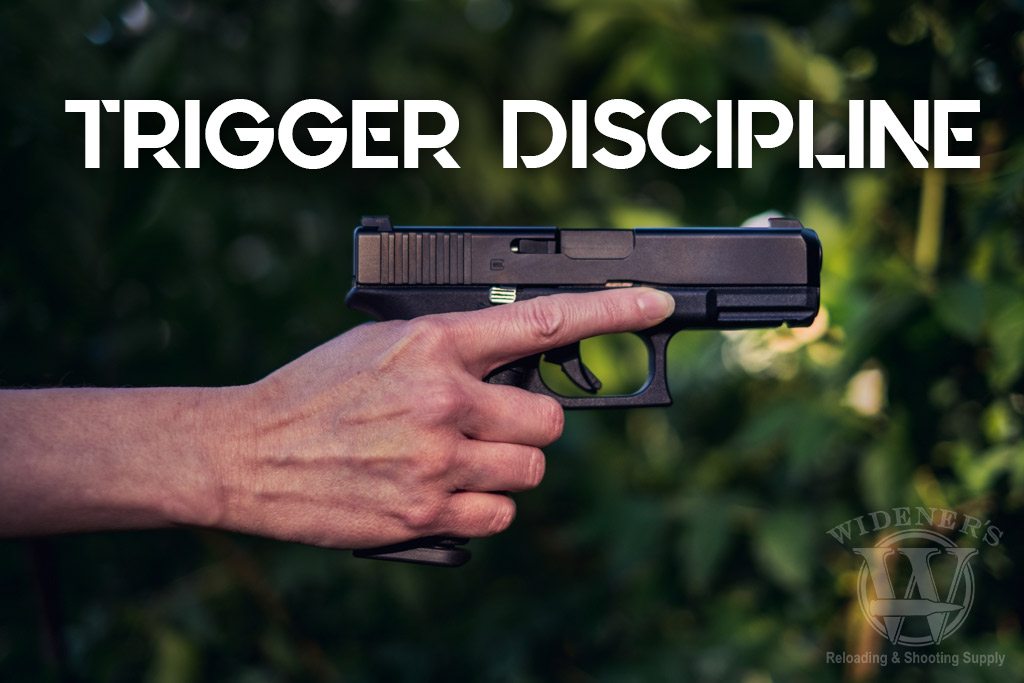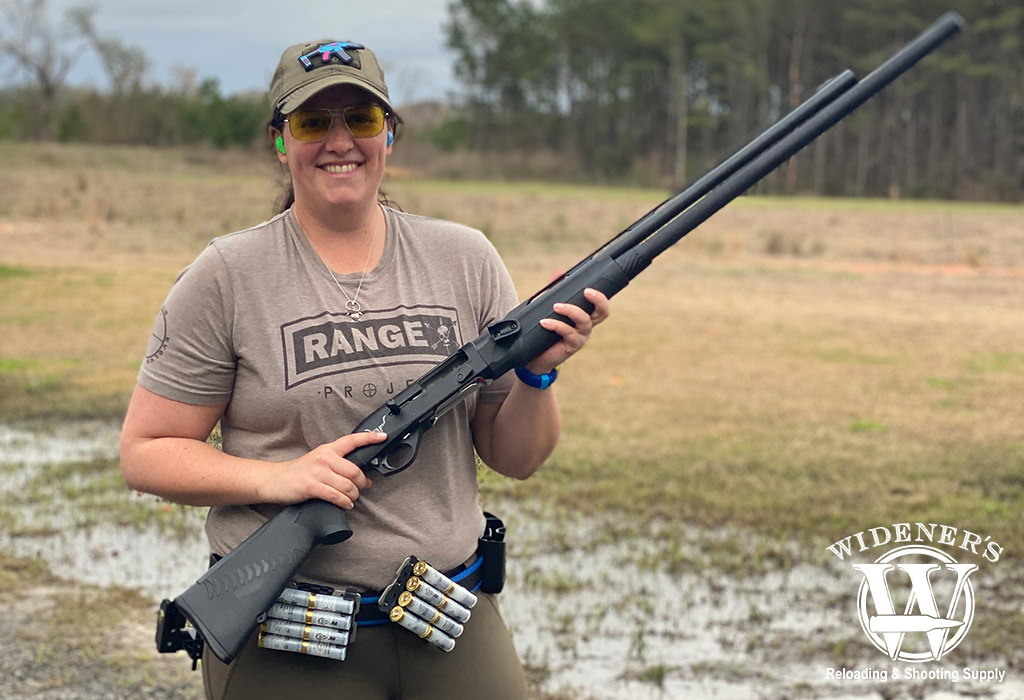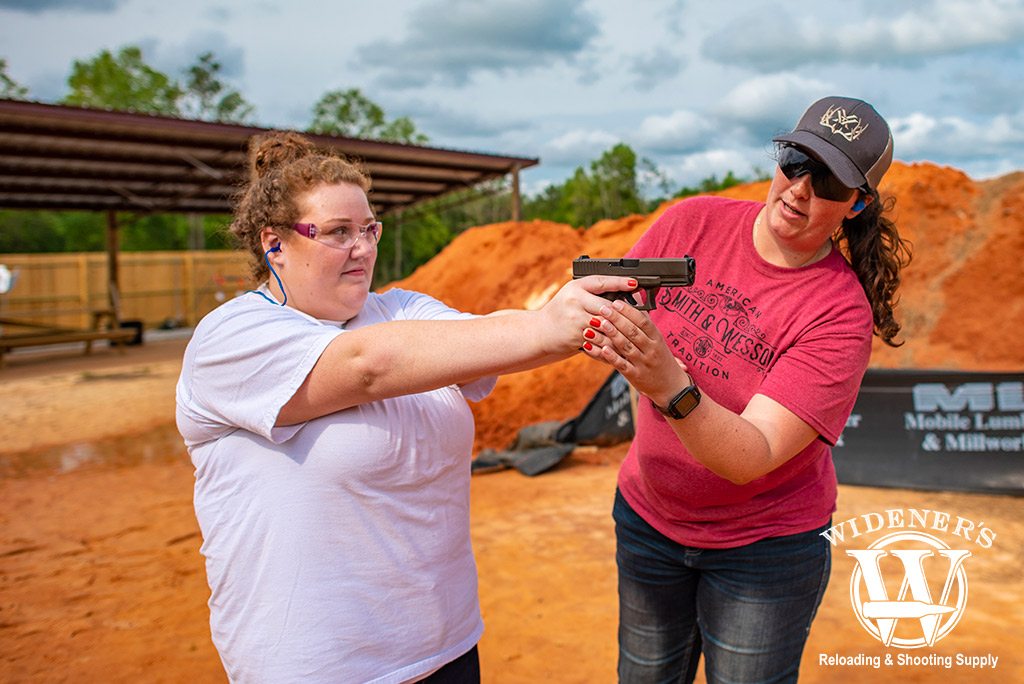

Guest Writer: Kenzie Fitzpatrick
Trigger discipline, in my opinion, is the most important rule of firearm safety. It’s the last line of defense you have against the gun firing a round. If you were to pick up a firearm right now, any kind, where would your trigger finger land? If the answer isn’t outside of the trigger guard, flat against the slide, rail, or frame, you’ve got some trigger discipline to work on.
Accidental discharges happen for two reasons: lack of knowledge or carelessness. For most new shooters, the natural thing for them to do when they pick up a gun is to wrap their hands around the gun and put their finger in the trigger guard to rest on the trigger. It’s a lack of knowledge about why their finger shouldn’t immediately go to the trigger. For those of us who have been around firearms, we know better. The moment you relax and get careless with trigger discipline is when you’ll have an accidental discharge.
What Is Trigger Discipline?

Always keep your finger off the trigger until your gun is pointed in a safe direction and you are ready to shoot.
Trigger discipline is keeping your finger off the trigger until you are ready to shoot. With a huge variety of guns out there, your grip may change, but trigger discipline should always remain the same no matter if it’s a shotgun, rifle, or pistol.
This is especially important because not all guns have external safeties on them. What that means is the only “safety device” on a gun may be built into the trigger or is the weight of the pull of the trigger. The easiest example of a safety built into the trigger is a Glock pistol. The trigger safety is the middle piece of the trigger that has to be pulled down with the trigger in order to fire the gun. If you try and pull the trigger backward without depressing the middle piece, the gun will not fire because the trigger can’t be pulled back without it.
Common Trigger Discipline Scenarios
Here’s how to apply and practice trigger discipline in 6 common scenarios:
Dry Fire
From the newest shooter to the most advanced competitor, dry firing should be practiced by all gun owners. Before shooting a gun for the first time, I recommend getting a feel for the function of the gun by dry firing it. The trigger pull of a Glock will feel different than that of a Smith & Wesson, for example. While picking up different guns, your trigger finger should always come to rest in the same general area. The reason this is important for all firearms is when you pick up a shotgun, rifle, or pistol with the action closed (bolt or slide forward), but with no magazine, that doesn’t mean the gun is empty. Always, always check that a gun is unloaded before function testing or dry firing it.
Cleaning Your Gun

Always make sure your gun is unloaded and the chamber is clear before you start cleaning your weapon.
Some accidental discharges happen during the cleaning of firearms. The reason for this is shooters often forget to unload their firearms before cleaning. Or, unknown to them, they have a loaded gun that requires they pull the trigger to break it down. I highly recommend making sure all live ammunition is removed from magazines and firearms before starting this process. Always maintain perfect trigger discipline when disassembling and reassembling firearms while checking to see if they’re loaded before pulling the trigger.
Unholstering & Holstering
If you carry concealed, you need to practice unholstering your firearm as well as reholstering your firearm. This is true if you’re a competitive shooter as well or if you practice with a loaded pistol at all times. Trigger discipline has to be performed with every action you take. Your holster should cover your trigger guard so nothing can reach or pull the trigger. When unholstering your firearm, keep your trigger finger pointed straight downward as you pull out your pistol.
As the firearm comes out of the holster, your trigger finger should come to rest on the frame until you are on target and ready to shoot. When you are finished shooting and want to re-holster it, take your finger off the trigger and move it back to the same spot on the frame. Then look to where your holster is and put the gun back in it while moving your trigger finger out of the way to slide into the holster. At no point should your trigger finger touch the trigger during this process.
Changing Magazines
Whether you’re at the range having fun or in a competition, trigger discipline must be practiced while changing magazines. A lot of accidental discharges happen when a shooter leaves their finger on the trigger while hitting the magazine release button or when loading a new magazine into the firearm with a round still in the chamber.
Whether you’re being timed or not, after you’ve shot the last round before going to reload, take your finger off the trigger. Put it outside of the trigger guard, flat against the slide, rail, or frame, and then start your reloading process. This should happen before hitting the magazine release button as well. Do not put your finger back on the trigger until the new magazine is in, your sights are lined up to your target, and you are ready to start shooting again.
While Moving
It’s great if you’re practicing shooting and moving! A lot of competitive shooters have mastered the art of trigger discipline while moving, but in some cases they are shooting while moving. Your trigger finger should be off of the trigger while you are not actively engaging targets. If you are having to run from one shooting spot to another with no targets in between, you should be practicing trigger discipline in between spots and before taking off running.
If you are shooting while moving, only shoot as fast as you can see your targets. Use your best judgement to accurately make the shots you need to make. Never run with a gun with the trigger depressed or with your finger resting on the trigger. Too many “what ifs” can happen.
When Someone Hands You a Gun
Humans make mistakes. The most professional of shooters, employees, gun owners, and other gun handlers can’t be 100% perfect. It is up to you and you only to practice safe gun handling. Even if the most experienced shooter hands you a firearm and tells you it’s unloaded, check for yourself, every time.
This is especially important when handling a gun someone gives you that you’ve never seen or shot before. First, make sure the gun is unloaded and empty. Then, dry fire the gun to get a feel for the trigger. Some triggers are set to an extremely low pull and will surprise you at how easily they can fire. That’s also how accidents can happen.
Safety First

Don’t become a statistic, using proper trigger discipline is an essential part of being a responsible gun owner.
If there’s one lesson each gun owner can pass on, it’s trigger discipline. Guns are neither safe nor unsafe by themselves. Yet, Nearly 500 Americans die accidentally each year due to the mishandling of firearms. Always pay attention and practice safe gun handling with all firearms you pick up. Always know where your finger is in relation to the trigger when handling a gun. Remember the rules of firearm safety and keep your finger off the trigger until you are ready to shoot.


